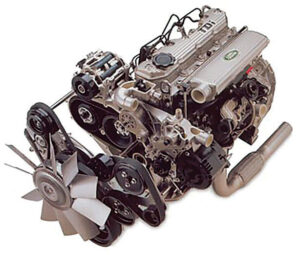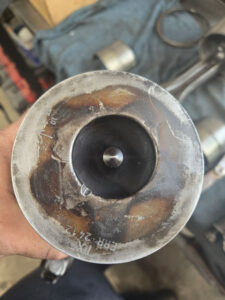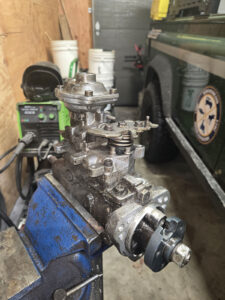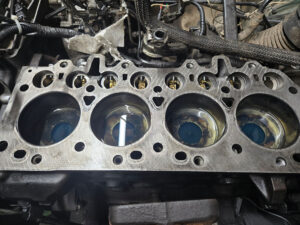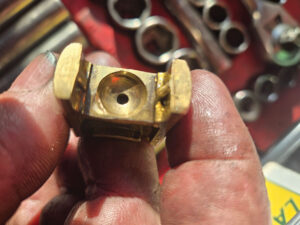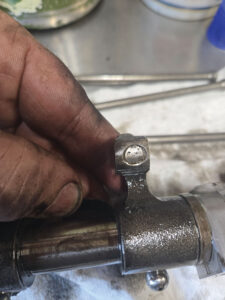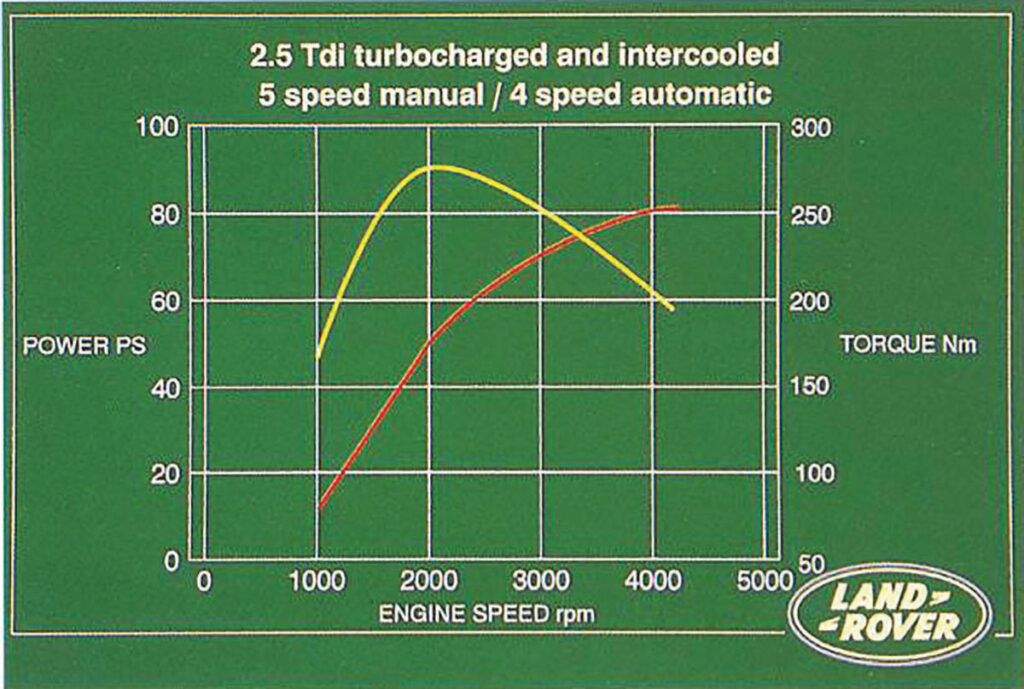While working at my shop, (Green Oval Garage, Fletcher, VT), I received a text from my friend, Leif Counter, Edgartown, MA.
“My Land Rover is running hot. Can I bring it to you?”
Leif discovered the overheating problem during the Newfoundland tribute trek honoring Dave Sweetapple [See Holiday 2024 issue –ed.], noting it ran hot the entire trip, so much so that at times he had to stop to let the engine cool down. On the advice of our mutual friend John Dakowicz of the Hillside Garage, Leif had replaced the head gasket, even re-torquing it, but that did not cure the overheating.
As I had just completed a bulkhead swap and new turbo installation on our mutual friend Mike Kenney’s Defender 130 L316, Leif arranged with Mike to trailer the 110 HiCap 300 Tdi, leave it at my shop, and hitch a ride back to Massachusetts. They arrived on a cold February day, dropped off Leif’s 130, loaded up Mike’s 130, and headed south.
For diagnostics of Leif’s Defender, I started with the easy stuff. I followed the factory bleeding procedure, and drained a lot air out of the system. I thought, “Good, that was simple,” but no, I had not appeased the Rover gods, as a test drive revealed that it still ran hot.
Next in line for the diagnostic was the water pump. A quick trip to Rovers North and, after fitting the new water pump, it not only still ran hot but now the 300 Tdi also made a horrible noise. I delivered the bad news to Leif and we agreed I would remove the cylinder head and explore the innards of the engine.
300 Tdi pistons utilize non-concentric swirl chambers in the cylinder head to extract the most efficient fire from a compression stroke. Each piston has an arrow etched into the top that should point to the front of the engine, so the combustion occurs at the ideal location on the piston. On this engine, the pistons had been installed backwards, with the concurrent problems of the pistons hitting the tops of the glow plugs. Oh, and I found the injector pump had been installed 180 degrees off. Rather than send it out for a lengthy recalibration, I picked up a new one at Rovers North. (It took me longer to make the round-trip drive to Rovers North than it did to install the replacement one.)
I unbolted the sump pan and removed the pistons. Remarkably, the cylinders had not been damaged as everything measured standard. Rovers North supplied new pistons rings and bearings, a new three-hole head gasket (better safe than sorry) and new head bolts, all from their inventory. I buttoned up the engine, but no joy — the engine noises still sounded horrific.
Leif had told me that he imported his 110 from a Belgian firm and could trace his Defender’s history to the Dutch military. Sometime in its past, someone had used a helicoil to secure the stud that locks in the timing belt tensioner. When the stud failed, the timing belt jumped, bending the push rods and cracking the rocker arms. Removing the valve cover further revealed missing valve stem caps. Removing the timing belt housing further exposed a chewed-up belt as well as a ruined threaded hole for the tensioner pulley.
What to do? I had a thought. I could drill and tap the casting to 12 millimeters, but the stud from the Rovers North kit is 10 millimeters. I called Gavin Warren of Red Rover Parts, who has a very comprehensive machine shop, and asked if he could machine a 10 millimeter to 12 millimeter [M10 and M12] stud. He said, “No problem!” A few days later the custom part arrived and it fit perfectly. With a little green Loctite and a prayer to the Rover gods, I installed it and it held my breath.
After all the diagnostics and parts replacement, I cracked the cylinder #1 fuel pipe. I turned the key and it fired right up, purring like a kitten. I put about 90 miles of driving on it and the temperature gauge needle sat straight up, never straying into the red. Leif and his partner, Maggie Bucci, came to pick it up and made the long drive back to Martha’s Vineyard. While they drove, I paced the floor worrying about whether my repairs were completed. I breathed a huge sigh of relief when Maggie sent me a photo of the 110 on the ferry to their island.
Mark Letorney reminded me that the 300Tdi descended from a rugged line of strong engines. It’s the last of a simple mechanical lump; I tip my cap to the engineers who designed this mechanical marvel. Leif has told me that “the 110 runs great and at the right temperature. It drips more oil than it uses.”

